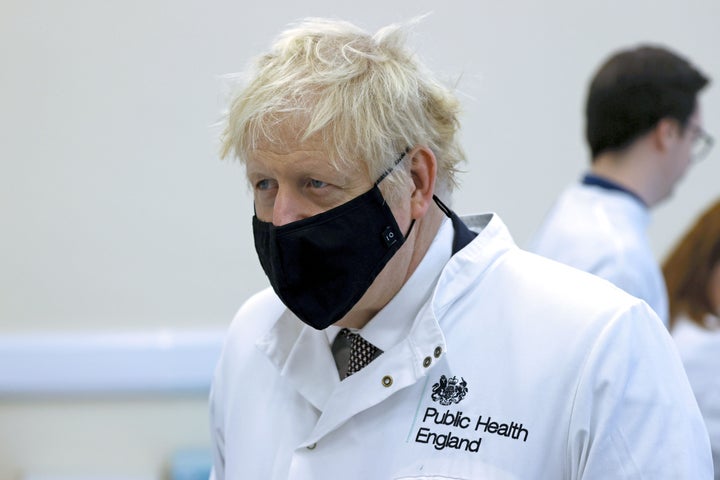
You’re reading The Waugh Zone, our daily politics briefing. Sign up now to get it by email in the evening.
Boris Johnson today defended placing almost 99% of the English population into the strictest lockdown levels, arguing the “vast majority” of the public understood it was necessary to suppress the virus.
But the prime minister is facing a significant rebellion from backbench Tory MPs, and when it comes to the vote next week and may have to rely on Labour votes to save his tiers. Sky News has counted 57 Conservatives who have indicated they will oppose the government. Other reports put the figure as high as 70.
Keir Starmer has not said yet what he will do, but shadow health minister Justin Madders hinted the party could demand some changes before giving the green light. He said this morning the government should “reflect” on whether restrictions should be made more local, given the varying infection rates within counties. Tory concerns about the broadbrush approach were a “fair critique”, he added.
Johnson, on a visit to a Public Health England lab in Porton Down, said he was not keen on dividing the country “up into loads and loads of very complicated sub-divisions” as “when a high-incidence area is quite close to a low-incidence area, unless you beat the problem in the high-incidence area, the low-incidence area I’m afraid starts to catch up”. The PM argued tiers 2 and 3 were needed to “drive the disease down” until the vaccine “comes on-stream”.
Speaking of the vaccine, my colleague Rachel revealed today that No.10 attempted to get doses of the Oxford University/AstraZeneca jab labelled with little Union Jacks.
It’s not surprising the government would want people around the world to be reminded that a potentially pandemic ending vaccine was made by “Global Britain”. Remember that back in 2012 development aid was badged with the Union Flag as “a clear symbol” it came from the UK (there will likely be less of that now but that’s a different story). The motivation appears different this time however. It was No.10′s “Union unit” tasked with fighting calls for Scottish independence that is understood to have been behind the plan. An interesting tactic given how spectacularly well pointing at all the EU flags on things funded by Brussels went for the Remain campaign.
The UK’s coronavirus R rate might have dropped below 1 for the first time since September 4. Figures from the Government Science Office suggest the reproduction number is between 0.9-1.0. London and the South East of England are the only two regions of England believed to have an R rate below 1. This will please people and politicians in areas like the north west which are under stricter rules than the capital, despite having a lower R rate.
The tight restrictions in place from December 2 will of course be loosened for the Christmas free-for-all holiday between December 23 and December 27. And today’s weekly document dump of advice given to ministers by scientists reveals the concerns of the Scientific Pandemic Influenza Group on Modelling (SPI-M-O). Coronavirus infections could “easily double during a few days of festive season” it said in a paper drawn up earlier in November. Yes, that’s right, a doubling of the infections.“Any relaxation over [the] festive period will result in increased transmission and increased prevalence, potentially by a large amount,” The “notes on festive period” document added. “Faithfulness to bubbles is paramount.”
For a glimpse into the future, it might be worth looking to Canada, which held its Thanksgiving celebration on October 12 and had 185,000 Covid-19 cases. Six weeks on, that number had nearly doubled.
